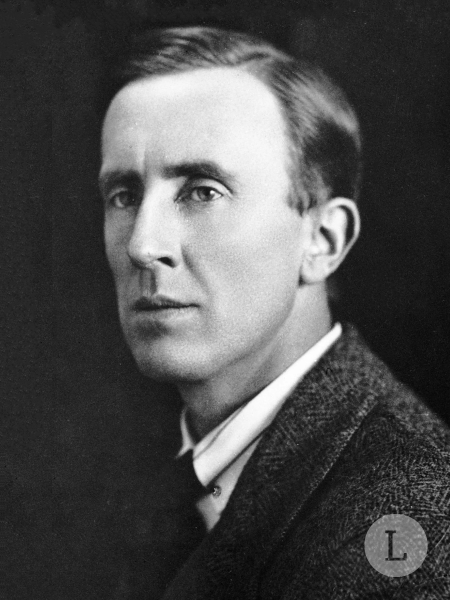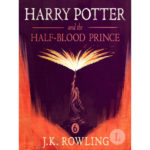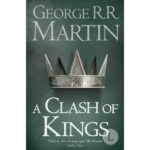Roverandom is a children’s fantasy novel by J.R.R. Tolkien that was first written in 1925 and published in 1998, posthumously. This book tells the tale of a young dog named Rover who gets transformed into a toy and embarks on a series of adventures to regain his original form.
BOOK INFO
version: CLASSIC, EBOOK, AUDIOBOOK
number of pages: 144
literary movement: MODERNISM
literary genre: FANTASY
1st edition: 1998
years of writing: 1920 - 1925
SUMMARY
One of the most notable aspects of Roverandom is the rich and vivid world that Tolkien creates for his characters. From the Moon to the bottom of the sea, readers are introduced to a diverse range of characters and settings that showcase Tolkien’s gift for world-building. The book’s portrayal of magical creatures, such as mermaids and talking dogs, also adds to the sense of enchantment and whimsy that characterizes the work.
The characters in Roverandom are also a standout feature of the book. Rover, the protagonist, is an engaging and relatable character, and readers are immediately drawn into his journey as he seeks to regain his original form. The supporting cast of characters, including the Man in the Moon, the mer-dogs, and the grumpy wizard, are also well-drawn and add depth to the story.
Another notable aspect of Roverandom is the way in which Tolkien incorporates humor and whimsy into the story. The book is filled with playful language, clever wordplay, and silly situations that are sure to delight readers of all ages. At the same time, however, the story also deals with important themes such as perseverance, loyalty, and the importance of being true to oneself, making it a book that is both fun and meaningful.
MAIN CHARACTERS
Rover
A little dog who is turned into a toy by a grumpy wizard. He sets out on a journey to regain his true form and encounters all sorts of fantastical creatures along the way.
Artaxerxes
The cranky wizard who transforms Rover into a toy. He eventually takes pity on the little dog and helps him to find a way to become a real dog again.
Psamathos
The Moon-dog who befriends Rover and helps him to navigate the treacherous realm of the Moon. He is a loyal companion to Rover and a source of guidance and wisdom throughout his journey.
Mercurius
The king of the Mer-dogs, who rules over a vast underwater kingdom. He is a proud and powerful creature who initially views Rover with suspicion but eventually comes to respect and even befriend him.
The Man-in-the-Moon
A mysterious figure who resides in a palace on the Moon. He is powerful and enigmatic, and Rover must rely on his wits and resourcefulness to navigate the various challenges he faces in the Moon’s realm.
The Sand-Wizard
A grumpy old wizard who lives on the beach and initially appears to be an enemy to Rover. However, he eventually helps Rover to find a way to become a real dog again and demonstrates unexpected kindness and generosity.
Each of these characters plays an important role in Rover’s journey and contributes to the rich and imaginative world-building that is a hallmark of Tolkien’s work.
“Valour needs first strength, then a weapon.”
JOHN RONALD ReUEL TOLKIEN
TOP 10 POINTS
- The inspiration for the book came from an incident in which Tolkien’s young son lost a toy dog at the beach. Tolkien created the story of Roverandom as a way to cheer up his son and turn the loss into an adventure.
- The book is notable for being one of Tolkien’s few works of children’s literature. It is a departure from his more well-known works such as The Lord of the Rings and The Hobbit, but showcases his skill for creating engaging and imaginative worlds.
- The book contains numerous instances of wordplay and puns, demonstrating Tolkien’s love of language and his playful sense of humor.
- The story takes Rover on a series of adventures that involve visits to the Moon, encounters with mer-dogs, and run-ins with a grumpy wizard.
- The characters in Roverandom are all anthropomorphic, with animals and even inanimate objects possessing human-like qualities and speaking and acting like people.
- The book explores themes of identity and transformation, as Rover struggles to come to terms with his new form as a toy and works to find a way to become a real dog again.
- The story also touches on ideas of friendship, loyalty, and the importance of staying true to oneself, as Rover learns valuable lessons through his adventures.
- Like many of Tolkien’s works, Roverandom features detailed and imaginative illustrations. The original edition of the book featured illustrations by Tolkien himself.
- The book has been praised for its imaginative and well-crafted world-building, showcasing Tolkien’s skill for creating detailed and immersive environments for his characters to explore.
- Roverandom is a beloved classic of children’s literature that has captivated readers for decades with its whimsical characters, playful language, and charming storytelling. It is a must-read for fans of Tolkien’s work and for anyone who enjoys imaginative and adventurous stories for young readers.
Finally, it is worth noting that Roverandom is an interesting departure from the epic fantasy that Tolkien is best known for. The book is a charming and imaginative work that showcases the breadth of Tolkien’s creative talents and his ability to write for a wide range of audiences. In this sense, Roverandom is a valuable addition to the broader Tolkien canon, and it offers readers a unique and delightful reading experience that is unlike anything else in his body of work.
ABOUT WRITER

J.R.R. Tolkien, full name John Ronald Reuel Tolkien, was an English writer, poet, and academic who is best known for his fantasy novels The Hobbit and The Lord of the Rings. He was born in Bloemfontein, South Africa on January 3, 1892, but moved to Birmingham, England with his family when he was three years old. His father, Arthur Tolkien, was an English bank manager and his mother, Mabel Tolkien, was a talented artist and musician.



